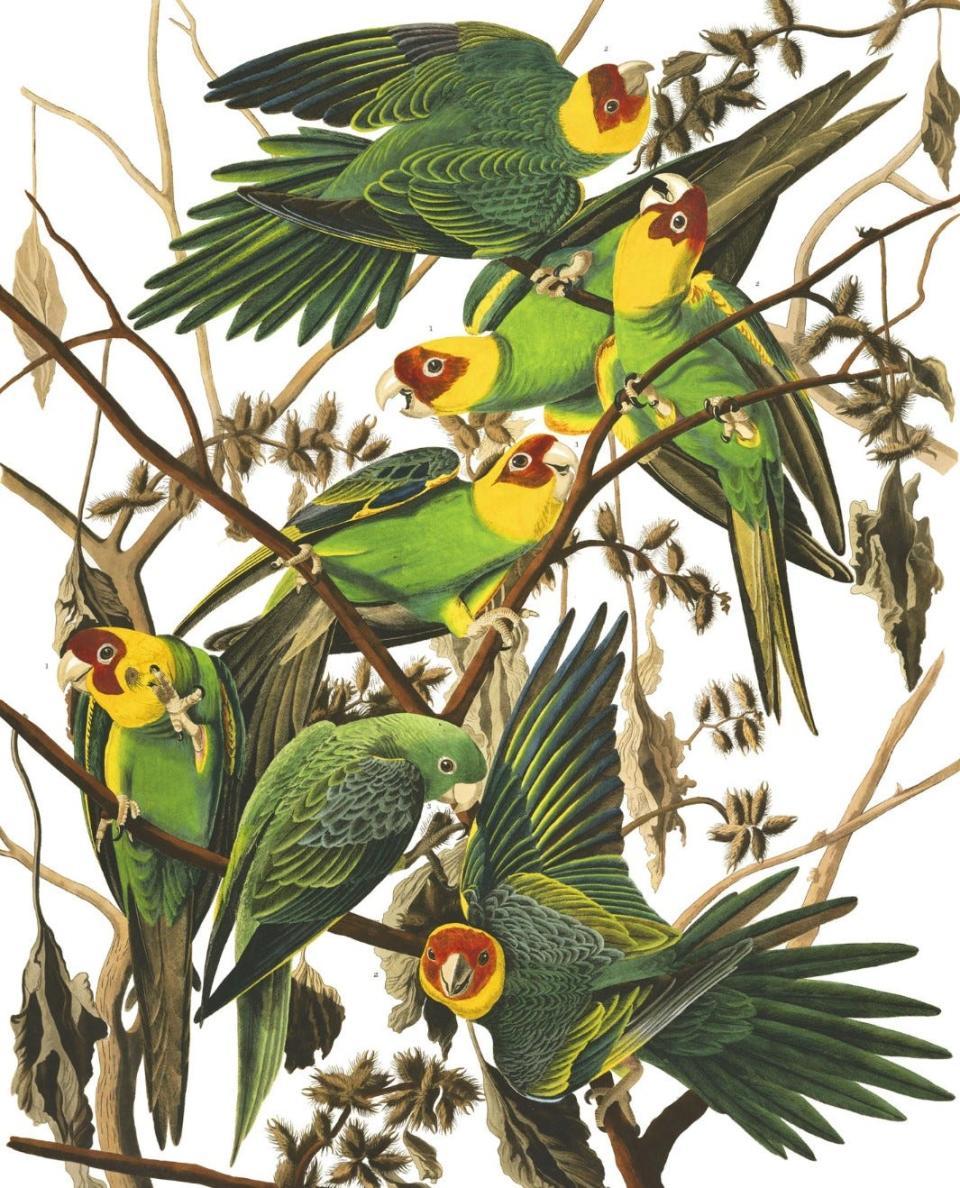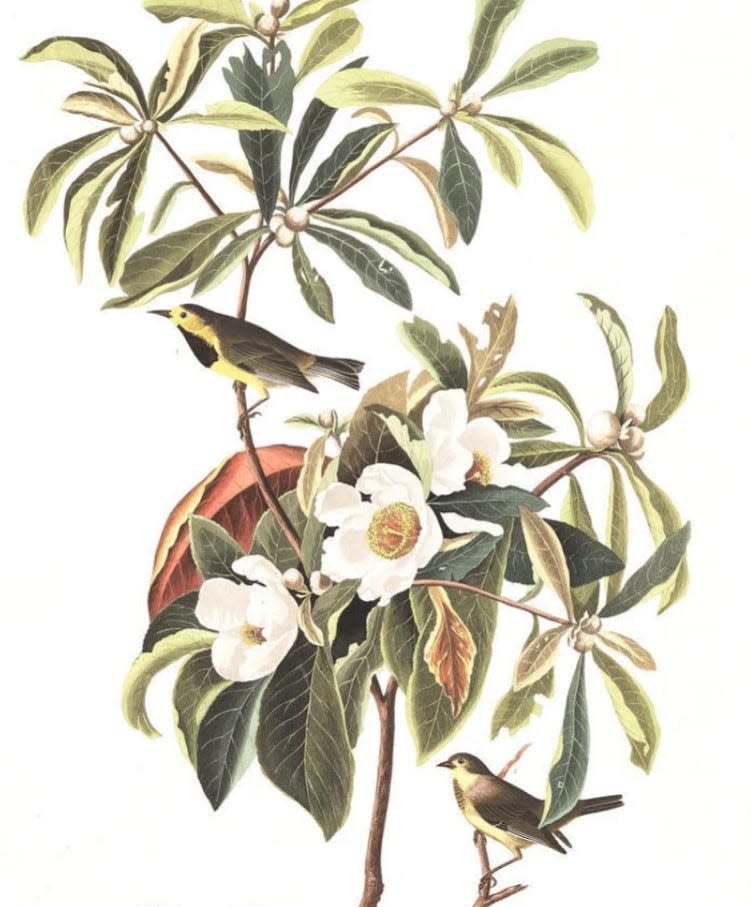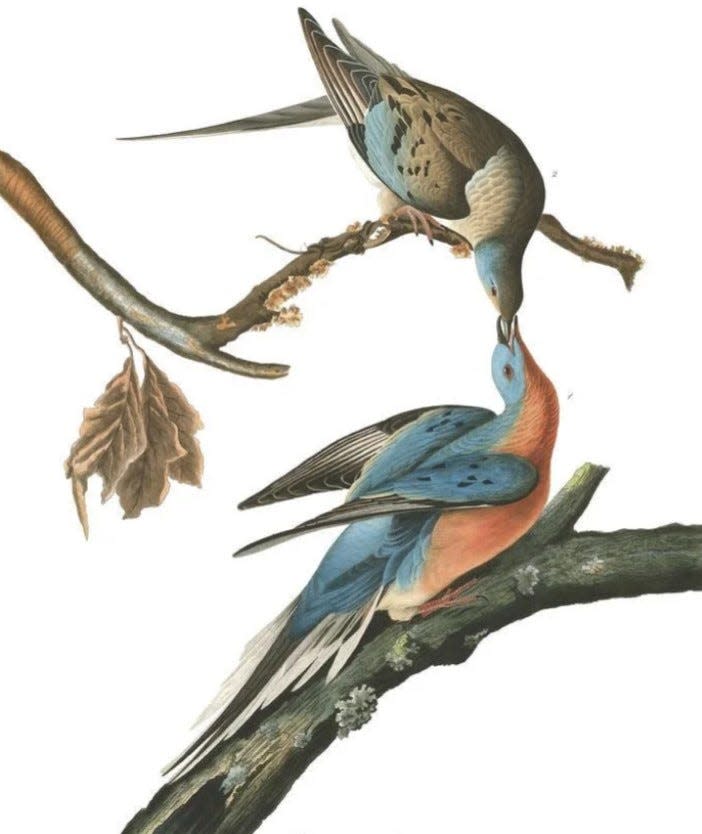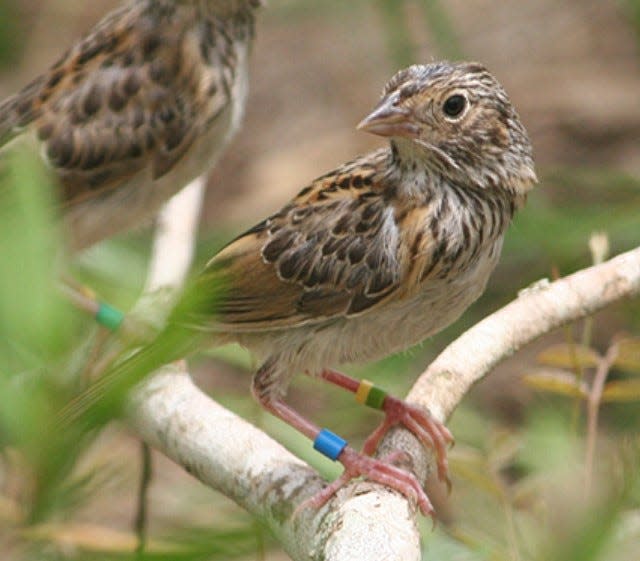What happened to these extinct Florida birds? Plus one that's still here but on the ropes
A federal agency last month removed a bird native to Florida from the Endangered Species List, saying that the Bachman's warbler was one of more than 20 species now considered extinct.
The U.S. Fish and Wildlife Service is the federal agency in charge of executing the Endangered Species Act, and the agency ruffled some feathers last month when it announced that the Bachman's warbler no longer exists.
FWS, however, did not go so far as to remove another, even more famous avian species.
Which bird is that? Read on to find out more about Florida native birds that are extinct, and one species that's on the ropes.
Carolina parakeet
This bird once filled Florida skies and is the only parakeet endemic to North America.
Florida was a stronghold for the Carolina parakeet (Conuropsis carolinensis), at least the species that lived in the Southeastern United States. Researchers have suggested in recent years that there were two species of Carolina parakeet, according to the Smithsonian Institute.
No one knows why this colorful bird disappeared from the American landscape, although deforestation, over hunting and competition from honeybees may have led to their demise, scientists say. The loss of old-growth forest across much of the nation didn't help as the bird needs that type of habitat, according to FWC.

It had the northernmost range of any parrot, staying as far north as Wisconsin and New York and as far west as Colorado.
The southern subspecies was centered in Florida, though, and was found along the Gulf Coast as well as the Atlantic side of the state and north to the Carolinas.
More: Planners, others worry more people will be in harm's way with SWFL redevelopment after Ian
Audubon scientists have found records of the bird dating back to 1564, and the bird was officially declared extinct in 1939.
Bachman's warbler
A relative newcomer to the list of vanished species, the Bachman's warbler (Vermivora bachmanii) was declared extinct in October by the U.S. Fish and Wildlife Service, or FWS, along with 20 other species native to North America.
Added to the Endangered Species list in 1967, this warbler lived in extreme south Florida and around Charleston, SC. What is thought to be the last Bachman's warbler was found in Cuba in 1988.
The bird was historically found mostly in the Big Cypress National Preserve and Everglades National Park.

An FWS website describes the birds as: "Delicate warbler with slender, decurved bill. Adult male, black forecrown, grey hind-crown and nape, yellow forehead, eye-ring, lores, supercilium and throat. Yellow underparts with black patch on upper breast and white undertail. Olive-green upperparts, grey wings with olive fringes and yellow lesser coverts, grey tail with white spots on inner webs of all but central rectrices."
Outside of their preferred habitat and size, little is known about this mysterious bird.
Ivory-billed woodpecker
Another ghost of the swamps, the ivory-billed woodpecker's existence is still being debated.
Along with the Bachman's warbler, it was slated to be classified as extinct last month, but several environmental groups have challenged the FWS over whether or not the bird has truly vanished.

Thought to have been pushed out of its native habitat by hardwood foresting and habitat destruction, the ivory-billed woodpecker shows up regularly in reports in places like the remote swamps of Arkansas.
It was home in south Florida, too, and it likely disappeared soon after the region was stripped of most of its old-growth forests.
More: Florida's real flamingos: Pink treasures still being reported on state's west coast
But for birders, there's always been a few who've held hope that the bird is still somewhere in the millions of acres of land and water that make up Everglades National Park and the Big Cypress National Preserve.
Passenger pigeon
The extinction of the passenger pigeon (Ectopistes migratorius) is a classic example of birds being hunted beyond the brink of survival.
Although they numbered in the billions in 1500, Europeans and their descendants killed off much of the population before the Civil War, and the last capture of a wild bird happened in 1900, according to an Audubon website.
"The head and upper parts of the male pigeon were a clear bluish gray with black streaks on the scapulars and wing coverts," a Smithsonian Institute description reads. "Patches of pinkish iridescence at the sides of the throat changed in color to a shining metallic bronze, green, and purple at the back of the neck. The lower throat and breast were a soft rose, gradually shading to white on the lower abdomen. The irises were bright red; the bill small, black and slender; the feet and legs a clear lake red."

These birds became famous because of their migratory pattern, a display that could last more than a day and shade out the sun.
"The migratory flights of the passenger pigeon were spectacular. The birds flew at an estimated speed of about sixty miles an hour," a Smithsonian website reads. "Observers reported the sky was darkened by huge flocks that passed overhead. These flights often continued from morning until night and lasted for several days."
More: Florida's panther appears to be in decline with few roadkills this year
This bird nested primarily in the Great Lakes region, and scientists estimated that up to 136 million birds were found nesting in Wisconsin, the total flock spread out over thousands of acres.
They wintered in areas like Florida and Texas, with some flying north to Canada for the warmer months.
Grasshopper sparrow
Here's one that hasn't thrown in the towel yet but is on the ropes.
The grasshopper sparrow (Ammodramus savannarum floridanus) is considered to be the most endangered bird in North America.

The grasshopper sparrow is a tennis-ball sized bird that lives in the open prairies and scrubby lands north of Lake Okeechobee and near or in the Kissimmee River watershed.
Their range consists of Polk, Osceola, Highlands, and Okeechobee counties, according to FWC. As their name would suggest, these birds eat mostly grasshoppers, along with seeds.
Fragmentation of habit, along with degradation and habitat loss, are the top threats to its existence.
"From late March to July, males sing from perches on shrubs and grasses to maintain their breeding territories," and FWC website reads. "The primary song consists of two or three weak introductory notes followed by an insect like 'buzz.' A less frequent secondary song is a sustained rambling warble."
Connect with this reporter: Chad Gillis on Facebook.
This article originally appeared on Fort Myers News-Press: Birds in peril: Native Florida bird declared extinct, another hangs on

